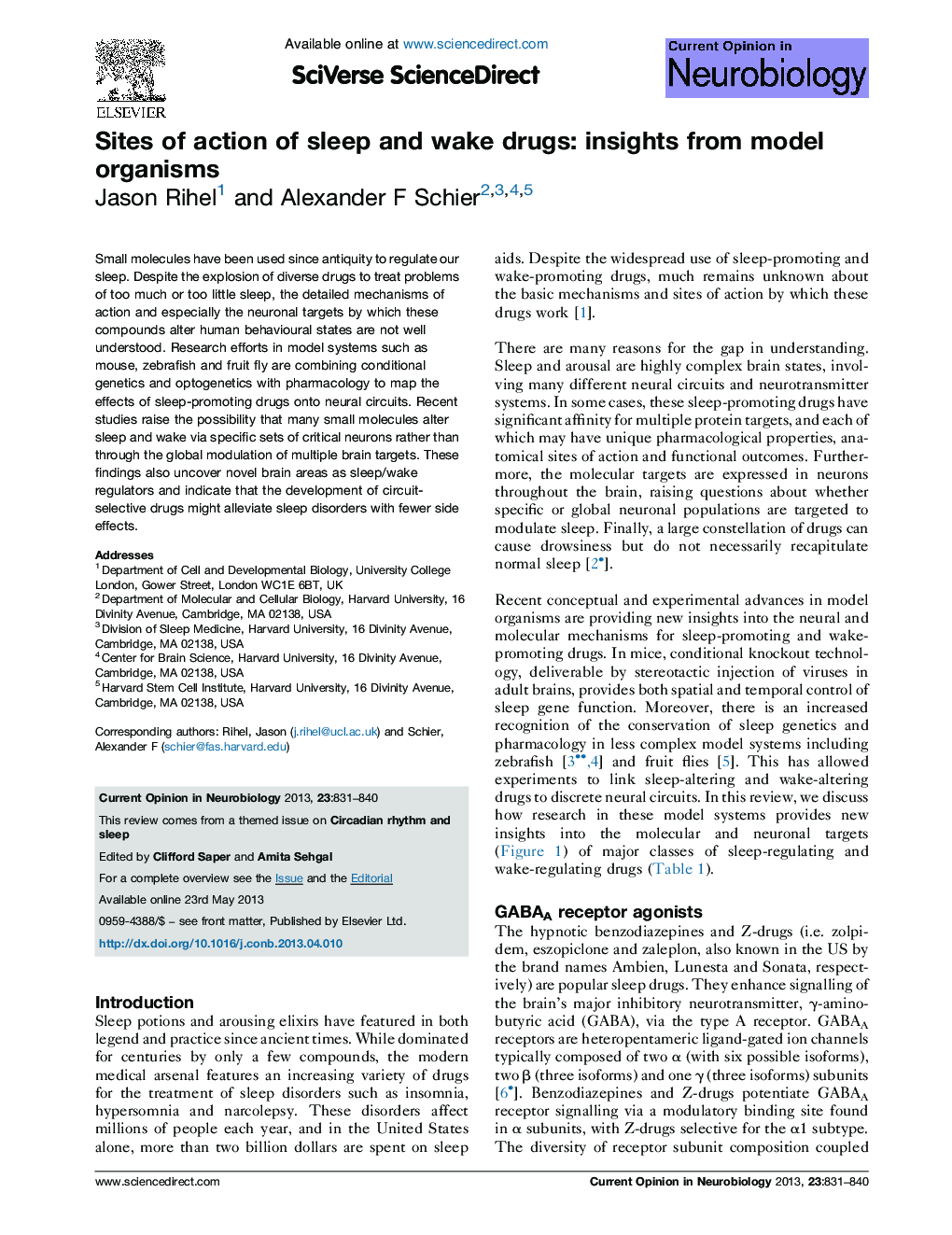| Article ID | Journal | Published Year | Pages | File Type |
|---|---|---|---|---|
| 6266620 | Current Opinion in Neurobiology | 2013 | 10 Pages |
â¢The mechanisms and sites of action for sleep-altering drugs are poorly understood.â¢Conditional mouse mutants and optogenetics are identifying critical sleep circuits.â¢Sleep drugs may act on critical sets of neurons, instead of globally.â¢Small molecules affect zebrafish and Drosophila sleep in conserved ways.
Small molecules have been used since antiquity to regulate our sleep. Despite the explosion of diverse drugs to treat problems of too much or too little sleep, the detailed mechanisms of action and especially the neuronal targets by which these compounds alter human behavioural states are not well understood. Research efforts in model systems such as mouse, zebrafish and fruit fly are combining conditional genetics and optogenetics with pharmacology to map the effects of sleep-promoting drugs onto neural circuits. Recent studies raise the possibility that many small molecules alter sleep and wake via specific sets of critical neurons rather than through the global modulation of multiple brain targets. These findings also uncover novel brain areas as sleep/wake regulators and indicate that the development of circuit-selective drugs might alleviate sleep disorders with fewer side effects.
